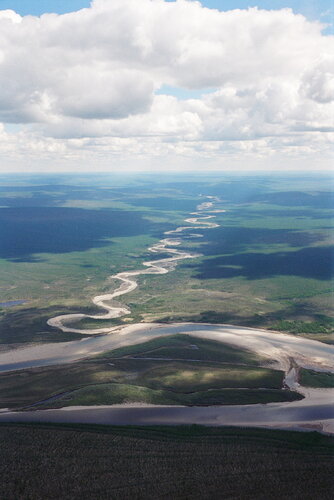
«игра на хомусе» на Яндекс.Фотках
The Sakha (Yakutia) Republic (Yakut: Саха Республиката; Russian: Респу́блика Саха (Якутия)) is a federal subject of Russia (a republic). The direct transliteration of the republic's name is Sakha Respublikata in Yakut and Respublika Sakha (Yakutiya) in Russian.

Посмотреть на Яндекс.Фотках
Sakha stretches to the Henrietta Islands in the far north and is washed by the Laptev and Eastern Siberian Seas of the Arctic Ocean. These waters, the coldest and iciest of all seas in the northern hemisphere, are covered by ice for 9-10 months of the year. New Siberian Islands are a part of the republic's territory.

«Январский северный закат» на Яндекс.Фотках
Sakha Republic is currently the largest subnational entity in the world in terms of land area. If a map of Yakutia were superimposed upon a map of the continental (lower 48) states of USA, Yakutia would overlap almost a half. However the population of Yakutia is less then one of a single state such as Rhode Island.
Yakutia is also known for its climate extremes, with Verkhoyansk Range being the coldest area in the northern hemisphere. The Northern Hemisphere's ‘Cold Pole’ is at Oymyakon (also spelled as Oimekon), where the temperatures have reached as low as –71.2° C (–96.2° F) in January, 1926.
Sakha is well endowed with raw materials. The soil contains large reserves of oil, gas, coal, diamonds, gold, and silver. 99% of all Russian diamonds are mined in Sakha, accounting for over 23% of the world's diamond production. Industry generates 43% of the gross national product of Sakha, stemming primarily from mineral exploitation. The diamond, gold and tin ore mining industries are the major focus of the economy.
History:

«Жеребячьи нежности» на Яндекс.Фотках
The Sakha arrived relatively recently in their current geographical area. They are heterogeneous of Turkic and Mongoloid origin. They absorbed the hunter-gatherer tribes and after centuries of consolidation, began to call themselves "Sakha". The Evenki referred to the Sakha as "Yako" and this term was adopted by the Russians when they began arriving in the region in the early 17th century. Tygyn, a "prince" of the Khangalassky Yakuts, granted territory for Russian settlement. The Lensky Ostrog (Fort Lensky), the future city of Yakutsk, was founded by Pyotr Beketov, a Cossack, on September 25, 1632 (the date of the first stockade construction). In August of 1638, the Moscow Government formed a new administrative unit with the administrative center of Lensky Ostrog, which cemented the town's ascendancy in the territory.
Russians established agriculture in the Lena River basin. The members of religious groups who were banished to Sakha in the second half of the 19th century began to grow wheat, oats, and potatoes. The fur trade established a cash economy. Industry and transport began to develop at the end of the 19th century and in the beginning of the Soviet period. This was also the beginning of geological prospecting, mining, and local lead production. The first steam-powered ships and barges arrived.
On April 27, 1922 former "Yakolskaya land" was proclaimed the Yakut ASSR, and in 1992, after the fall of the Soviet Union, it was recognized in Moscow as the Sakha (Yakutia) Republic under the jurisdiction of the Russian Federation.
Source:Wikipedia


2 комментария:
Thank you for this post, it bring a lot of memories. We had friends from Yakutia who used to visit us very often (but that was before the collapse).
Lastochka,
Thank you indeed, this is kind of you. Most of Russian territories are still a mistery to me. I guess they hide many jewels...I was recently surprised with the wonderful Khabarovsk city - it should be famous worldwide! Such an elegance, distinction, belle-époque ambiance...on the contrary, towns like Vorkuta look like hell on earth! I guess a big country is made of these contrasts.
Отправить комментарий